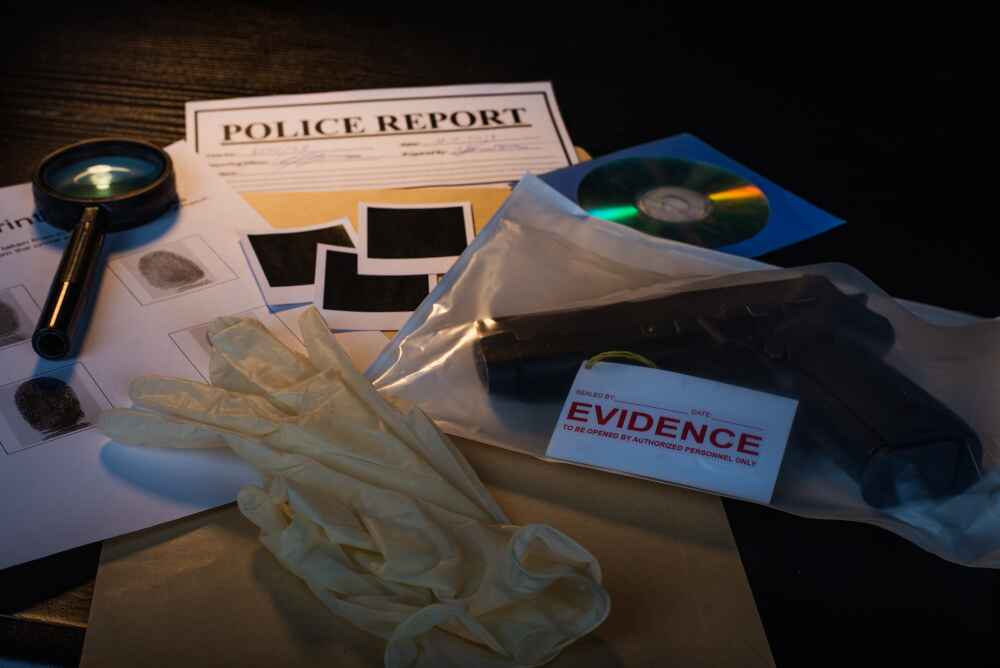
- Understanding Attempted Murder Under the Canadian Criminal Code
- Type of Evidence in Attempted Murder Cases
- The Role of Forensic Science in Criminal Cases
- The Growing Importance of Digital Evidence Collection
- Legal Challenges in Evidence Collection
- Defence Strategies in Attempted Murder Charges
Under criminal law, both murder and attempted murder in Canada can result in a lifetime in prison. Given the gravity of the criminal penalty, investigators utilize the most advanced methods to collect evidence when proving intent in attempted murder.
Considering the importance of forensic evidence in criminal cases involving murder, both the prosecution and the defence teams engage their own forensic experts to analyze every piece of evidence. Below, we discuss the types of evidence in attempted murder cases and the growing importance of forensic science and digital evidence collection in building effective criminal defence strategies.
Understanding Attempted Murder Under the Canadian Criminal Code
The Canadian Criminal Code, Section 239 (1), defines an attempt to commit murder as a strict indictable offence with a maximum penalty of imprisonment for life. At the same time, if a firearm was used in the commission of the offence, the criminal law sets several minimum sentences depending on the type of the weapon and whether the offence was related to a criminal organization.
Although attempted murder does not result in death, and in some cases, may even exclude bodily injury, the courts consider this offence more serious than when someone is killed as a result of manslaughter due to intent to kill. In Regina v. Logan, 1990, the Chief Justice describes the attempted murderer as “no less a killer than a murderer” who is “lucky” because of fortuitous circumstances, which prevented the death of the victim.
Type of Evidence in Attempted Murder Cases
When the Crown lays the attempted murder charges, they need to prove the following elements of the offence:
- identity of the accused,
- date and time of the crime,
- place where a crime was committed,
- the firearm or another weapon used in the commission of the crime,
- injuries to the victim,
- intent to kill of the accused.
The prosecution bases its case on evidence collected by investigators, including direct evidence, such as fingerprints or DNA samples and indirect or circumstantial evidence, such as digital footprints. Since direct evidence in attempted murder is often based on physical proof of the crime, it requires forensics to substantiate the case.
The Role of Forensic Science in Criminal Cases
Forensics is an interdisciplinary specialty that applies various fields of science for criminal investigation, for example, biology for DNA analysis or ballistics for investigating firearm involvement in attempted murder. Where there are no other witnesses except the victim, forensic science helps recreate the scene of crime and events.
The forensic evidence in criminal cases involving attempted murder can include:
- DNA analysis
- fingerprints,
- hair, fibre and blood spatter analysis,
- ballistic reports.
The impact of forensic science on legal outcomes in attempted murder cases cannot be overestimated. Forensic evidence in criminal cases often plays a critical role both for the prosecution and pursuing criminal defence strategies, allowing to substantiate or disprove evidence.
The Growing Importance of Digital Evidence Collection
With the world going more and more digital, electronic evidence starts to play a more prominent role in both prosecution and defence. The surveillance and digital footprints are an essential part of evidence helping to substantiate its important elements, such as the identity of the accused, date, time and place of the incident and, in some cases, to prove the intent.
Digital forensics is used by both prosecutors and criminal defence lawyers as an effective technique to analyze digital footprint, including social media posts, browsing history, texts or messages, emails and other data. Forensic experts help to corroborate or refute surveillance footage, the accuracy of timestamps, and other elements, analyze smartphones and digital devices, and help build a strong case or defence.
Legal Challenges in Evidence Collection
According to the Canada Evidence Act, which applies to all criminal proceedings, the judges can “accept in evidence anything that is reliable or appropriate” and may base their decision on that evidence. At the same time, the courts only consider evidence if it is admissible that it is not excluded by any rules.
Specifically, Section 24(2) of the Charter obliges the judges to exclude any evidence that infringes or denies individual rights guaranteed by law. Since privacy is one of the fundamental rights guaranteed in Canada, as the component of “liberty” and “security of the person’s interests, the evidence collected in violation of privacy provisions may be turned down as inadmissible. Similarly, Section 8 of the Charter protects Canadians against unreasonable search or seizure, for example, entering a dwelling house without a warrant or valid exceptions, such as crime going on inside.
Defence Strategies in Attempted Murder Charges
When defending attempted murder cases, criminal lawyers start by requesting the full disclosure of evidence the Crown has against the accused, whether they plan to use it during trial or not. Having full disclosure allows defence lawyers to look for irrelevancies in evidence or contest its admissibility and other aspects. An experienced criminal lawyer can also evaluate whether the evidence is accurate and request forensic analysis to challenge the prosecution’s case.
In implementing the defence strategies for attempted murder, such as self-defence, lack of intent, or Charter defences, criminal lawyers bring every element of the prosecution case to scrutiny. For example, when a criminal lawyer has a different opinion about the meaning of some elements of evidence, they can engage their own forensic experts to raise a reasonable doubt about the facts presented by the Crown and their interpretation. Considering the critical role of DNA in legal evidence in many attempted murder cases, involving forensic experts can make all the difference for effective defence.
Conclusion
The scrupulous analysis of evidence in criminal cases is instrumental in challenging accusations and building strong legal defence in attempted murder cases. With forensic evidence playing a critical role in cases involving murder, criminal lawyers need to engage forensic experts to reconstruct the scene and effectively challenge prosecutions’ evidence.
Vilkhov Law’s expert Toronto murder lawyer has extensive experience in defending attempted murder cases and analyzing evidence and has a qualified team of forensic experts for DNA, fingerprints, ballistics, digital evidence investigation and analysis. If you are facing criminal charges involving attempted murder in Brampton, Mississauga, Newmarket, Vaughan or elsewhere in Ontario, please don’t hesitate to contact the Vilkhov Law legal team for a free consultation.






